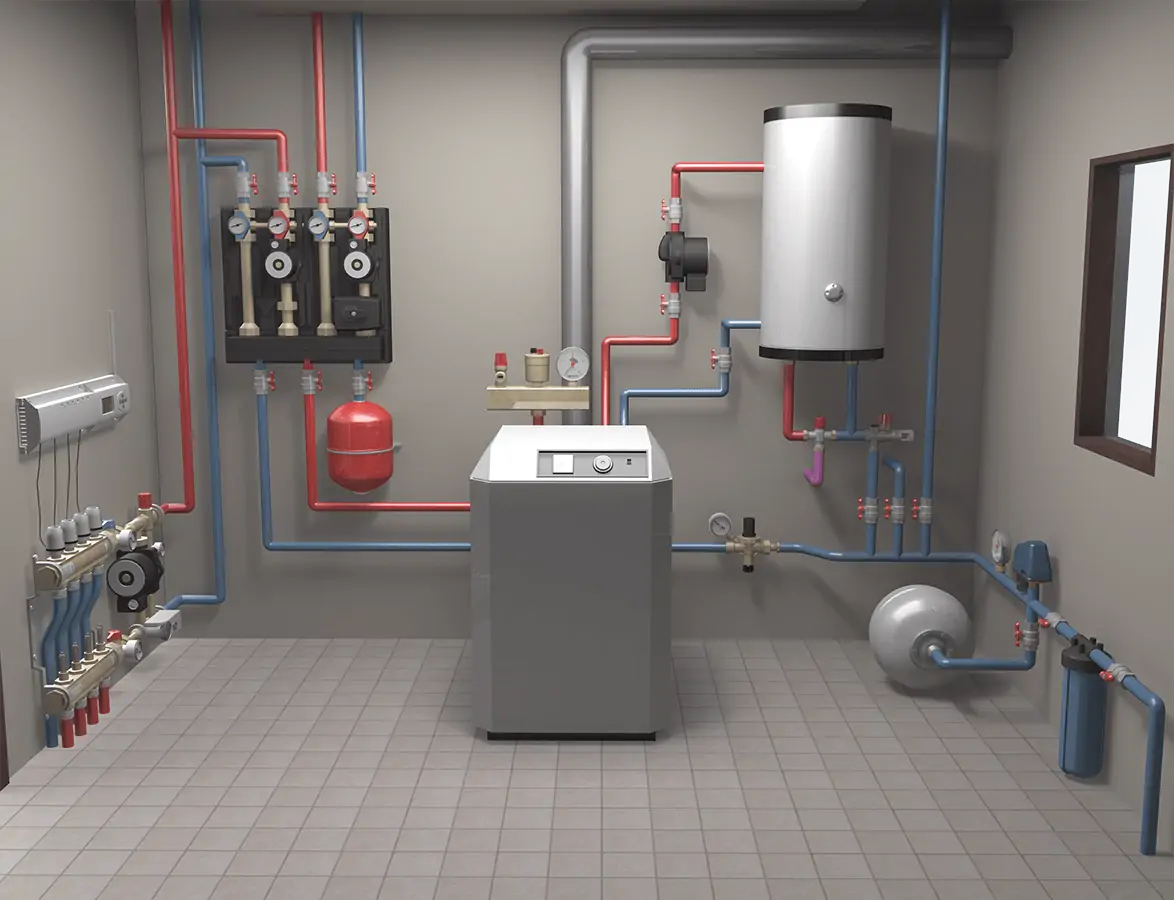Keeping Cool in the Heat: Top Air Conditioning Strategies

Examining Your Space: Trick Dimensions for Air Conditioning Installation
If you've ever before discovered yourself in an area where the air conditioning simply couldn't seem to stay on par with the summertime warm, you might gain from assessing your room.
Guaranteeing your cooling system is effectively sized and mounted calls for interest to key dimensions such as space dimension, doors and window measurements, ceiling height, insulation quality, and air movement patterns. By understanding these factors, you can enhance your cooling system's efficiency and effectiveness.
However just how specifically do these measurements impact your cooling installation?
Secret Takeaways

- Accurately determine room measurements for correct unit capability and airflow optimization.
- Choose energy-efficient windows and doors to improve insulation and lower warm transfer.
- Guarantee excellent vent placement and unobstructed air movement for effective cooling distribution.
- Upgrade insulation to boost thermal resistance, seal gaps, and boost general system efficiency.
Room Size Measurements
When determining space dimension for air conditioning installation, make certain you properly analyze the measurements to establish the suitable unit ability. Start by thinking about furnishings placement within the area. Furnishings can obstruct air flow if put also near to vents or the cooling system. To assure maximum cooling performance, arrange your furnishings in such a way that advertises appropriate airflow throughout the room.
Furthermore, take into consideration the area's design and dimension when preparing for air flow. Appropriate air blood circulation is crucial for preserving a regular temperature throughout the room. Be mindful of any challenges that can disrupt the flow of air, such as drapes blocking vents or big items of furnishings blocking airflow. By guaranteeing adequate space for air to distribute easily, you can take full advantage of the efficiency of your a/c device and create a comfy environment in your home.
Doors And Window Capacities
To assure appropriate a/c installment, evaluate the measurements of windows and doors in the room to enhance air movement and cooling effectiveness. When evaluating window and door measurements, take into consideration the following:
- Structure Compatibility: Ensure that the a/c unit you pick is compatible with the frameworks of your doors and windows. Incorrect fit can cause air leaks and reduced energy effectiveness.
- Setup: Think about the installation process when picking an air conditioning system. Some systems might need specific window dimensions or extra alterations for correct installation.
- Product Selection: Select windows and doors made from materials that supply excellent insulation to improve energy effectiveness. Properly insulated doors and windows can help keep a regular temperature in the area.
- Power Effectiveness: Go with energy-efficient doors and windows to reduce warmth transfer and boost the general performance of your a/c system. Energy-efficient materials can boost the cooling abilities of your space while lowering energy costs.
Ceiling Elevation Analysis
Examining the height of your ceiling is important for determining the very best positioning of air conditioning vents for effective cooling distribution. When appraising your ceiling elevation, see to it to take into account the clearance required for both the ductwork and the cooling vents. Sufficient ceiling clearance warranties that the ductwork can be installed properly with no obstructions, allowing for optimal airflow throughout the space.
Furthermore, proper clearance above the vents ensures that the cooled air can distribute easily with no limitations, bring about even more even cooling in the room.

When intending the positioning of ductwork, consider the height of your ceiling to stay clear of any issues with installation or efficiency. Properly positioned ductwork can assist make the most of the performance of your air conditioning system and make certain that each room gets adequate cooling.
Insulation Evaluation
Examine the insulation quality to maximize the effectiveness of your a/c system. Proper insulation plays an important duty in keeping a comfy interior environment while optimizing power performance. Below are 4 key points to examine when examining the insulation in your area:
- Thermal Resistance: Examine the R-value of your current insulation to see to it it satisfies the advised requirements for your region. Higher thermal resistance suggests far better insulation top quality, which aids in lowering warmth transfer and maintaining a constant temperature level.
- Insulation Placement: Examine the positioning of insulation throughout your area, concentrating on areas such as walls, ceilings, and floorings. Correctly set up insulation prevents energy wastage by minimizing heat exchange with the surrounding setting.
- Securing Voids: Recognize and secure any kind of voids or fractures in the insulation to prevent air leakage. Correctly sealed insulation boosts power efficiency by maintaining airtight obstacles that prevent conditioned air from running away.
- Upgrading Insulation: Take into consideration upgrading your insulation to newer, more energy-efficient materials. Updating can improve thermal resistance, reduce energy usage, and boost the general efficiency of your cooling system.
Airflow Evaluation
Examining the air flow within your space is necessary for ensuring peak performance of your air conditioning system. Proper airflow distribution is important to preserve regular temperatures throughout the location. When analyzing air flow, consider the ventilation demands of each space to ensure adequate air blood circulation.
To examine airflow distribution, begin by checking for any obstructions such as furnishings blocking vents or debris clogging duct. Poor air movement can lead to inefficient air conditioning and home heating, leading to discomfort and enhanced power prices. Central air conditioning setup It is necessary to attend to any issues promptly to maximize the efficiency of your air conditioning system.
Furthermore, comprehending the ventilation requirements of different areas in your home or workplace is key to preserving air high quality and comfort degrees. Proper ventilation helps remove stagnant air, odors, and pollutants while generating fresh exterior air. By examining air flow and ventilation requirements, you can develop a much more comfy and healthy interior environment for every person.
Often Asked Concerns
Exactly How Can I Identify the Best Location for My A/c System Within the Area?
When figuring out the best spot for your air conditioner system in a room, think about the cooling ability and air circulation. Keep the unit far from obstacles that could block airflow and area it centrally in the room to assure even cooling down.
Perfect positioning assists disperse great air efficiently, optimizing the unit's efficiency. Correct positioning can make a substantial distinction in just how properly your ac system cools down the room.
Exist Any Type Of Specific Factors to Think About When Installing an Air Conditioning Device in a Multi-Level Building?
When setting up a cooling system in a multi-level structure, take into consideration variables like power performance, cooling down ability, placement, and accessibility.
See to it the device is strategically positioned to cool down numerous levels efficiently. Opt for a place that permits very easy gain access to for repair and maintenance.
Additionally, examine the cooling ability to make sure it can sufficiently cool the entire building. These factors to consider will help maximize the performance of your cooling system in a multi-level setup.
What Is the Perfect Distance Between the Air Conditioning System and Any Heat-Producing Devices in the Space?
When placing your cooling unit, make certain proper ventilation distance from heat-producing devices in the space. This aids with warmth dispersion and protects against the air conditioning from functioning more difficult to cool the space.
Aim for an optimal range of at least 3 feet in between the air conditioner system and any heat resources like stoves or lights. Keeping this separation will maximize the performance of your cooling system and expand its lifespan.
Are There Any Prospective Hazards That I Should Be Aware of When Installing a Cooling Device in a Little or Encased Space?
When installing a cooling system in a little or encased space, be mindful of prospective dangers. Ensure to resolve air flow issues to avoid air top quality concerns. Take safety preventative measures seriously, especially with minimal area restraints.
Know installment challenges like proper positioning for best performance. Prioritize safety and ensure your area is well-ventilated to prevent any type of dangers connected with installing an a/c unit in a confined area.
How Can I Ensure Correct Ventilation for My Air Conditioning System to Run Efficiently in an Area With Limited Air Movement?
To maximize air flow for your air conditioning system in a space with restricted air flow, assurance correct air flow by keeping vents clear and unblocked.
On a regular basis tidy or replace air filters to maintain efficiency.
Take into consideration utilizing a fan to aid flow air and stop stationary pockets.
Setting the unit in an area where air can move freely, preventing cramped spaces.
These steps will aid your air conditioning unit operate effectively and cool down the space properly.
Final thought
Now that you have taken vital measurements for your air conditioning installation, you're one action better to ensuring peak cooling performance in your room.
By properly examining area size, doors and window measurements, ceiling height, insulation, and airflow, you can make educated decisions on the very best a/c device for your requirements. https://easthamhvac.co.uk/air-conditioning-repair.html
Remember, appropriate measurements are crucial for an effective and effective cooling installation.
